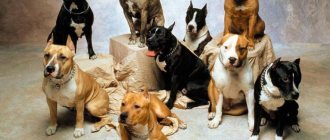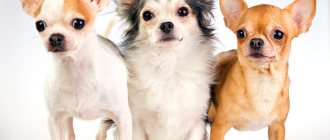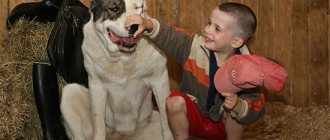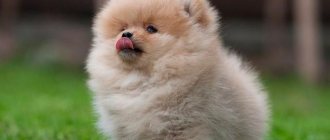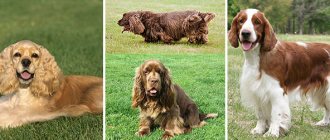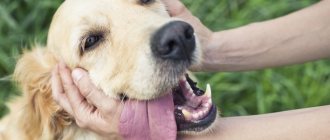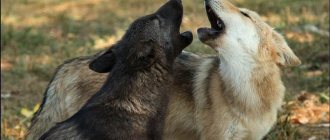As soon as people domesticated the dog, it began to help them in everyday life. The protection of housing by our smaller brothers, indeed, goes back to the distant past. Since the times of ancient Rome, people have used friendship with dogs. The animal understands that it is fed and treated well. And now we can observe that those dogs to whom the owner shows love and care become faithful helpers and guards.
The premises could be guarded by both simple mongrels and purebred dogs that could easily learn the relevant skills. It is in their genes that such inclinations are embedded, which manifest themselves in training and learning. These breeds of dogs are called guard dogs. They are ideal for protecting premises, apartments and private estates. When choosing, be sure to consider how the dog eats and how much human warmth and care it requires. If your family has children, examine how it treats smaller family members.
Before getting a guard dog
The question of having a dog in the house arises for many people living in the private sector. A four-legged friend who mainly serves to protect the territory may become a real member of your family. Therefore, treat your dog with love and patience. If you want your dog to learn how to guard a private home, the first thing you will need to do is try to find a common language with him and build trust. This relationship is the basis of any command learning and training process. The dog must understand that you took him in for a specific purpose. This means that it is important to set boundaries from the very beginning. For example, if you know that the dog will live on the street, do not allow him to enter the house. Otherwise, the dog will then not understand why it is not allowed to be in the room. In order for your pet to feel comfortable in the yard, arrange a booth and a special place for it. For larger breeds, specially designated areas, fenced around the perimeter, can be created.
Raise a guard or a loyal friend?
You decide!
I want an obedient dog
Moreover, it is important for you to decide how exactly the dog will guard the house. She can move freely around the territory, be tied to a chain, and move around a limited area, the so-called “checkpoint.” If you are setting up a place for your dog, keep in mind that it should be comfortable at any time of the year. It is better to choose a dog to protect your home in the warm season, especially if it is a puppy. Of course, an older dog can tolerate cold conditions more easily. If you are adopting a small dog, a different approach is initially required. We will talk about this with you further.
Maintenance, care
The ideal living conditions for a Moscow watchdog are a courtyard with a spacious enclosure and a warm kennel, where the dog can live all year round. A large animal will feel uncomfortable in a city apartment.
Care:
- swimming - 2-4 times a year (in warm weather);
- combing. When kept in an apartment, shedding can last 12 months, so you will have to care for the coat daily. In males, seasonal shedding may be delayed. If your dog hasn't shed yet in mid-summer, wet the coat with water (without shampoo) and comb it thoroughly to encourage shedding of dead hair. Teach puppies to care from childhood;
- daily examination of the ears - once a week, remove accumulated dirt with a damp cloth;
- eyes - wipe traces of nitrous oxide with a cotton pad moistened with strong tea leaves;
- flea and tick treatment (frequency depends on the product used);
- diet - porridge (rice, buckwheat, rolled oats) with lean meat, offal, vegetables, sea fish / premium factory feed. With natural feeding, the amount of meat in the diet is 50-75%;
- walks - daily, 2-3 times a day (even when kept in an enclosure), for a minimum of 1.5-2 hours, combining active games with training, leisurely walks. Puppies up to 12 months, until their bones have become stronger, are not subjected to long hikes and energy-consuming games.
Caring for a puppy to protect your home
It is very important to understand that if the dog is still small, you will have to take it into the house for a while. Even in a warm summer kitchen, raising a puppy can be challenging. Especially if there are a lot of unnecessary items. They say that the owners are to blame for everything the little dog does. For example, he chewed on shoes that you didn’t put away. Of course, it’s worth explaining to the dog that you can’t do this. The best guards are trained on the principle that a small dog is not allowed to do the same things as an adult dog. For example, set a taboo on having a dog on the bed, in the bedroom, etc.
If the puppy has not yet grown up and has not had its vaccinations, we recommend that you do not take it out into the yard. Also note that up to 3-4 months, especially if it’s cold outside, the dog needs to be kept warm. Naturally, this is fraught with the fact that she will get used to being at home. What to do in this case?
As soon as you understand that you can begin to accustom your dog to living outside, actively begin mastering the enclosure. This must be equipped in advance. Consider what your dog needs to feel comfortable. In the booth, the dog is often very bored. Therefore, you will most likely see your dog on the porch.
To get your dog used to the enclosure, you can gradually start feeding him near his new habitat. This way the pet will have pleasant associations with its new home. You can then place the bowl deeper into the enclosure. As a rule, guard dogs value space. Even if the dog is at a special checkpoint, give him the opportunity to explore the territory, walk and show him what the dog should guard.
Teaching a dog to bark at strangers
Almost all breeds can learn to bark at strangers. Well amenable to training:
- German Shepherd;
- Rottweiler;
- Staffordshire Terrier;
- Boxer and other fighting dogs, as well as protectors.
Such breeds by nature react by barking at strangers. When training them, at the moment of barking, the main thing is not to stop performing certain actions, but, on the contrary, to force them to bark even more and longer. To do this, you need the help of strangers who are not familiar to the animal. During training, the pet must be on a leash so as not to harm people. Upon completion of the training, the owner must say “” in a calm voice and pet the animal. You need to achieve such a result that when you appear, the dog stops barking.
Currently reading:
- Making the dog obedient by socializing it
- Five ways to stop a dog from barking
- Features of the character and upbringing of the Australian Shepherd
- Why does a dog bite and how to stop it from doing so?
Guard breeds for home protection
Each dog has a sense of its own territory, which it will protect. Even the instincts of a small dog allow it to show aggression towards a well-wisher. Very often we can come across stories that a Chihuahua or a French bulldog has shown guard qualities. But still, some breeds were specially bred for such purposes. Let's take a look at watchdogs.
- Moscow watchdog. They became popular in the middle of the last century, when they began to be used for security. The dogs are not picky about grooming, they are very persistent and hardy. They can easily tolerate the cold while in a booth in winter. This is a loyal and brave guard dog breed. Her genes contain the qualities of a St. Bernard, a sheepdog and a hound;
- Saint Bernard A good guard who is easy to train. They differ in that they get along well with their families and have a balanced psyche. The imposing size can scare even the most avid stranger away from your home. Such dogs need regular proper nutrition and care for their coat. Products must contain phosphorus, vitamin D and calcium;
- German Shepherd. A breed characterized by intellectual abilities and the ability to analyze a situation before attacking. Of course, this can also be influenced by the dog's training. Shows good security abilities, as it was previously used for herding sheep;
- When thinking about what kind of dog is best to get to guard a private home, you can take a closer look at the Alabai. They are intended for grazing livestock. But now they have begun to be used as guard dogs due to their guarding skills, observation and endurance;
- Caucasian Shepherd Dog. A distinctive feature is the dog’s watchdog qualities. Such a defender knows the boundaries of the territory, so he is unlikely to catch up with the attacker. But the fact that he will not allow anyone into the guarded facility is certain;
- Doberman. The dog is very devoted to its owner, is distinguished by understanding and developed mental abilities. The dog can not only be a good guard, but is also distinguished by its agility and speed. In addition, these dogs are very graceful and beautiful;
- The Rottweiler understands perfectly where his friends are and where the “strangers” are. Therefore, he can easily protect his flock, territory or private home. The dogs have a muscular build and a well-developed musculoskeletal system. They interact well with both families and young children.
Other dog breeds, such as the Airedale Terrier, are also used to guard the home. Although the dog is considered a hunting dog, it is becoming increasingly popular as a home guard. The breeds discussed above are excellent for both defending territory and attacking intruders. It is important to properly train your dog to respond to attempts by ill-wishers to enter the yard.
There is also a group of dog breeds that exhibit good guard qualities, but are less effective in protection. Indeed, it is not always necessary for the dog to attack. Sometimes you can limit yourself to loud barking. Let us consider with you which breeds can guard a private home:
- West Highland White Terrier. This dog breed is classified as medium. But, despite such a small size, in comparison with larger home guard dogs, such as the Moscow watchdog and others, they can perfectly protect the premises and yard;
- Basset hounds are also small in size and are suitable for inexperienced owners. They can be a little playful and adamant. This should be perceived as one of the qualities of a dog’s temperament and try to find a common language with the animal;
- The Irish Setter is perfect for guarding an apartment. Take a closer look at this dog if you have children or other animals at home.
So, among the different breeds of dogs, there are many that are specifically designed to protect the home. The best dogs for protection can combine the qualities of a guard dog, a hunter, and in some cases, get along well with children. Basically, we described guard dog breeds, in which the instinct of understanding the territory and the need to protect it is embedded in their genes. It is important for you to have a correct and friendly attitude towards the animal, its upbringing and caring for the dog. Then the dog will begin to understand that he is considered part of the family and will begin to treat everyone close to him kindly.
Do you want your dog to be obedient? Order a walk with elements of training!
Find out more
submit your application
Training an adult dog - reality and fiction
There is often an opinion that adult dogs cannot be trained. Of course, more difficulties are expected with raising an adult dog, but with due diligence the dog can be taught everything necessary. Shaggy friends love people; if they have a good attitude, they are ready to serve and teach, and follow commands.
When training an adult dog, much more effort is required, but the result remains positive. The main thing is not to overdo it and remember to reward the animal with treats or praise. Dog handlers advise not to mix types of rewards. Either the first or the second. Training an adult dog requires more time and more training.
How to raise a guard dog?
If you want to adopt a puppy to defend your territory, be prepared that it will need to be raised. It is worth understanding that there are advantages to having your dog with you “from cradle”. Firstly, her character has not yet been formed, and her skills and commands can be taught from scratch. This is in contrast to an adult dog who may not have the proper training. Then you will have to retrain the dog. But this happens extremely rarely. When choosing an adult dog to guard a private home, it is important to understand the peculiarities of its upbringing. If you got your pet from other owners, at first it may show hostility towards you. You can try to smooth this out with care, warmth and love for the dog. Once you have established a trusting relationship, you can move on to training. Having decided which dog is suitable for protection, you can begin to study the features of raising such a dog. Particularly important is the moment of training the dog, equipping him with a warm and cozy enclosure, as well as finding a common language with the pet.
Training by a master or family member
The question of who trains the dog or is obliged to do so is complex and ambiguous.
The only accurate and correct answer will be the statement that the training is carried out by a single person. For an animal, the presence of strangers or family members at the training site is a distraction that makes it difficult to concentrate on remembering commands. Remember, effective training can be carried out by people with a special character, with a large reserve of patience and developed willpower. If family members are not able to train the dog, it is permissible to give it to an instructor - a dog handler. Masters will be able to teach the animal different commands so that the orders remain internalized by the dog. The dog is called upon to carry out the orders of family members, regardless of the trainer. Remember, a dog has a circle of owners. If the animal is too friendly and follows the orders of strangers, this is bad; the dog is easy to take away.
How to housetrain a puppy?
When raising a guard dog from a very early age, we recommend that you take your time in training it to strictly perform the specified task. Don't leave your puppy in the kennel right away. He must get used to the new place, as well as to the territory he will defend. To make your dog feel comfortable, train him to the booth. To do this, you need to do more than just feed the puppy near its new habitat. Getting a dog to guard your home means taking into account all the nuances that face you. The puppy will feel better if you play with him in the yard and look around the kennel or enclosure together.
Your dog's familiar toys, which you can put inside, will help you adapt to living in a kennel. If the dog is interested in the booth, start encouraging such manifestations. To do this, praise or give a treat. When the puppy begins to stay longer in a new place, visit him more often, take an interest in his mood, praise him, and play.
Rules on and off the training ground
Training a dog correctly means following important points:
- Do not repeat commands. It is permissible to give an order twice, otherwise the animal will not accept the owner’s commands the first time.
- Mix up teams in places. For effectiveness, so that the dog listens to requests, exclude the possibility of simply memorizing training as an algorithm of constant actions in the established order. Try to change the order of requests to effectively train the animal.
- Don't be overzealous. Dogs, like people, get tired; excessive stress has a bad effect on training. Attention weakens, the animal reluctantly carries out orders. With systematic training in a tired state, it is easy to achieve the opposite effect.
- Commands should not be given too often. Before a new approach, a pause is made for several moments, otherwise the dog will begin to get confused.
- Before training, it’s a good idea to walk the dog and give it some physical exercise. A slightly tired dog is less distracted during training.
- If the dog obeys commands hesitantly or is afraid, most likely the trainer is treating the animal too harshly. Remember, dogs love affection, and with kind treatment they try harder.
- Encouragement is important. A treat or praise is a great incentive for your pet. It is better to go out for training with a slightly hungry dog; a well-fed animal will ignore the treat, and it will be worse to think with a full belly.
How to train a dog to guard the house
When teaching a dog commands, first of all, it is important to establish understanding. Showing love and care to the pet will help to find such a connecting link between the dog and the owner. You can start training your dog after it has mastered hygiene skills and has also gotten used to its owner. Typically, if you are adopting a puppy, it is 5 months of age. Some dog experts believe that training begins the day you take a small dog into your home. That is, those rules that will apply at an older age must be explained to the dog from childhood. One of the important points worth mentioning here is feedback on your nickname.
When it comes to training guarding qualities, try not just to point out to the dog that it should guard the territory. Your task is to show that you have a favorable attitude towards the animal and are ready to play with it. Don't be afraid to show care and warmth. Guard breeds, although intended for protection, still require such an attitude that will show the dog that he is a member of the family.
Mastering commands can sometimes be quite difficult, so you can resort to the services of a coach. But if you try hard, you can try to train the dog yourself. Home defense dogs most often have innate skills and abilities to defend their territory. So, any penetration into the house can be perceived aggressively by the dog. You can train your dog to either bark loudly or attack an intruder.
To let your dog know which territory needs to be protected, walk with him around the perimeter of the area. Next, you can train your pet with the help of a person who will imitate an intruder. To do this, ask your friend to try to get into your yard. If the dog reacts correctly, reward it by saying “Well done.” It is worth entering commands such as “Guard!”, “Voice!”, “Alien” and others.
Of course, if, when choosing a dog for protection, you buy a puppy, you should take into account that for some time she will perceive everyone friendly. You should not allow her to display such qualities for too long. And for this, start teaching the dog commands.
There are a couple more interesting methods on how to teach a dog to guard its territory:
- Pull the blanket the dog is on or try to take away the toy. It’s even better if it’s done by a companion dressed in rags. Also, the “actor” may try to escape. You, in turn, try to swear at the “intruder”
- If your dog is not very aggressive, you can try to teach it the ability to defend itself from ill-wishers by letting them attack you. Let the dog try to protect you;
You can choose a dog for protection based on the qualities of the breed itself, as well as your character. When raising and training, it is very important to communicate with your pet, so we recommend that you take into account the dog’s behavioral characteristics. For example, some may be playful and spoiled, while others may show restraint and behave more disciplined.
Why do you need to train a dog?
The set of commands for non-service dogs can be very diverse. Some owners ask their four-legged friend to bring slippers, others command “Guard!”, and still others teach the pet to bow. Dogs are highly trainable and can learn a wide range of skills.
Of course, the first need for learning commands is education. The dog must understand the prohibition and perform the simplest actions so that the whole family can live comfortably with their four-legged pet.
The second most important reason is discipline. When training, the dog is placed one step lower than the person and understands that she is not a leader. This forms obedient, but at the same time respectful behavior of the animal.
The third reason is that if a dog was bred for specific purposes (watchman, guide, companion, hunter), it must be able to carry out specific commands. They are usually learned under the guidance of an experienced trainer.
Additional, so to speak, bonus benefits include having fun together between the owner and the four-legged dog. Both learn to understand and respect each other, a rapprochement occurs and a strong friendship develops.
Raising the qualities of a dog for home protection
Before any dog learns to guard its territory, it must understand what is expected of it. The dog doesn’t have to be big and mean, sometimes it’s just important to have a guard instinct. This occurs in many dogs. Of course, guard dogs are easier to learn to protect the surrounding area.
Among the qualities that a guard dog should have are:
- Observation. It is very important that the dog understands where its territory begins and ends. This way she will be able to guard her around the perimeter, or in a specially designated enclosure;
- Easy to learn. To train your dog quickly, it must understand the purpose of your training and the end result. You are required to show understanding and patience;
- Equilibrium. The dog’s ability to quickly react to the appearance of an ill-wisher is very important. But she also needs to distinguish when a person is not trying to damage property;
- Tolerance towards your family members. The best dog for home protection must understand that in addition to security functions, he is also expected to be able to interact with people and children, and therefore protect them.
Training
A guard dog is more than just a watchdog. During the training process, animals develop five basic skills:
- Human protection;
- Delay and escort;
- Search by trace;
- Search of the area and premises;
- Watchdog in place and on the move.
Of course, guard dog training is carried out only by professionals. No amateur can cope with this on his own. However, before sending your dog for specialized training, you must complete a general training course with it.
Command “Guard!” for dogs: mistakes that owners make
- Do not use a tight or tight collar to practice the command. Because the resulting pain will inhibit the guard instincts. For training, use a simple wide (3 cm) and soft collar. Or a harness.
- The development of excessive anger in a dog leads to the fact that he attacks a walking assistant without any reason.
- If the skill of guarding objects is not sufficiently developed, the owner’s retreat to cover provokes the pet’s attempts to run after him.
- When the assistant throws a treat to the dog, repeating the command “Ugh!” too often. (“You can’t!”) slows down the active protection of the item.
- Don't work with the same assistant all the time. Assistants should be changed after 1-2 training sessions.
Watch the video on how to teach a dog to guard its owner.
Command “Guard!” For a dog, it is not limited to guarding objects. Using the same principle, skills for protecting a place, home, pasture and any territory are developed.
The history of the appearance of the Moscow watchdog
The years of the Great Patriotic War claimed many lives not only of people, but also of dogs, which brought great damage to the cynology. Large service dogs were represented by single specimens. Because of the need for them, the state signed a decree in 1950 to develop a new breed. The case was entrusted to the Red Star military dog breeding school, located in the Moscow region.
The best representatives in terms of appearance and training abilities were selected for breeding work. The Russian Watchdog was bred from the following breeds:
- Newfoundland and St. Bernard;
- Caucasian and German Shepherd;
- Piebald hounds and hounds.
Moscow Shepherd - character
The main character traits of the Moscow Shepherd are confidence and restraint. Even with large sizes, dogs are distinguished by their obedience. They have the following qualities clearly expressed:
- Security guard instincts. The menacing growl and frightening appearance leave no doubt that the guard dog will not be nice to strangers. The animal has well-developed security and guard qualities.
- Devotion to the owner and family. The dog's main instincts are protective. They are very devoted to all family members and are a devoted friend to them.
- Balanced psyche and lack of aggression. In normal circumstances, the dog is very calm, not aggressive, but is easily excited at the slightest threat to those whom it considers its family. She will not bark for no reason, but if necessary she will react to what is happening with her voice.
- Love for children. At home, the Moscow Watchdog is a good-natured and affectionate “bear”. Children love to play with him. The dog treats them like a nanny.
- High intelligence. The breed is distinguished by its intelligence and ability to train. Its representatives are even considered intellectuals.
- Stubbornness and independence. These qualities are smoothed out by proper training and the owner’s own character.
- Additional payment to pension for work experience of more than 35 years in 2022
- Payments to pensioners for children born before 1991
- Second pension for military pensioners in 2022 - who can receive it, calculation procedure and list of documents
Health and hereditary diseases
On average, the life expectancy of the Moscow Watchdog is 10-12 years. This period is considered short, it is due to rapid wear and tear of the joints, heart and other organs, which is quite predictable. Diseases typical for the breed are:
- food or seasonal allergies are a purely individual pathology due to the unpredictable reaction of the animal’s body;
- hip dysplasia - considered typical for heavy dogs, occurs due to an age-related slowdown in the process of renewal of articular tissues;
- obesity - dogs living in an apartment are especially susceptible to it, especially if they have an unhealthy diet.
Secret #6: Be available to your dog.
I am now sitting at the computer and writing this article. My dog was sleeping peacefully in the next room on a soft sofa, woke up and did not see me nearby. Then she got up and went to look for me. She came up, buried her wet nose in me and froze in anticipation.
It is very important for her to make sure that I am nearby and that everything is fine. She needs to feel connected to me. And I don’t chase her away, but I will definitely pet her, say something, invite her to put her paws on me. This way she can be even closer to me. We will both feel calmer and more pleasant in our souls.
Secret #5: Be Consistent
It is very important to be consistent with your dog and communicate your intentions and wishes to him.
Subsequence
- this is the constancy of your requirements, permissions and prohibitions. It is important for the dog to know by what rules it lives next to you. And these rules should not change every day.
Many dogs love to be close to their owner when he has breakfast or lunch. The food on the table smells very tasty, and often the dog gets a piece. How can you miss it? So your friend sits closer to you and drools in anticipation.
You always gave the dog a treat from the table. Today you suddenly decided that this was wrong and drove her away, and the next day you repented and treated her again. This is a clear example of inconsistency.
The dog will easily adapt to any rules. The main thing is that they remain unchanged. Otherwise, she will not be able to predict your behavior.
Sometimes you can jump on the bed and sleep next to you, sometimes you can’t. Either they can put their paws on you, or not. One day you can pull the leash while walking, then suddenly the owner starts swearing and tugging on it. The owner (and with him the world) becomes unpredictable; he cannot be a guarantor of security, which means he cannot be trusted. With such upbringing, the dog becomes nervous and unsure of itself.
But it's not that scary. In addition to clear rules, there are immediate decisions. If right now you don't want your dog on the bed, calmly ask him to leave. It is important not to scold the animal for jumping in, but simply say: “Get out.” The dog will understand and react calmly, and the owner will remain a base of security. Peace and trust between you will not be broken.
Secret #2: Never punish your dog.
You ask: “So, should she be allowed to do everything now? So she’ll sit on my neck, dangle her paws, and start riding!” This is a common mistake many owners make.
Few people know that punishment teaches a dog nothing.
Punishment is an unpleasant effect on an animal after it has done something undesirable. Let's figure out when we most want to punish a dog.
The most common case is destruction in an apartment. You went out on business and left your dog at home alone. You think that she should be dozing peacefully at this time, waiting for your return.
But not all pets calmly tolerate separation from their owner: many begin to get nervous and worried. Some animals try to cope with stress: they chew shoes, tear wallpaper, rip apart pillows, and take the sofa apart into pieces. Some especially gifted individuals can tear out door frames and open floors.
When a dog's lower jaw is actively working (during chewing, gnawing, intense licking), the vagus nerve is stimulated and acetylcholine is produced - the main neurotransmitter of the parasympathetic nervous system. Excitement decreases, the heart beats less frequently, and the animal calms down.
Having properly stimulated its vagus nerve, calmed down and become tired, the dog falls asleep. Waking up, she hears that her beloved owner has come: “Well, finally! Now I'm definitely safe! The owner has returned, and everything will be fine, life will get better,” the pet thinks, coming out to you.
And when you returned, you saw, instead of your cozy apartment, a complete mess. And in the midst of this horror, a happy, slightly sleepy dog comes out to you. She stretches sleepily and happily wags her tail. "Punish! Punish in such a way that this fiend of hell will never dare to do such a thing again!” - as a rule, this is the first thought that comes to the owner’s mind.
Of course, it’s very unpleasant when your dog spoils things in your absence (how to train him to stay home alone is a topic for another big conversation). But if you begin to punish him in this situation, it will only be an outburst of your emotions - and nothing more.
What is professional dog training – protective training course (PTC)
As a rule, such training begins when the animal reaches sexual maturity (one year and older), at which point the dog is sufficiently formed both psychologically and physiologically and is ready for a new stage of training - the formation of a defensive defensive reaction.
Training sessions are held on a specially equipped site, where a canine instructor (person involved) in a training suit teaches the animal to react quickly to a source of danger and quickly find a solution on how to act correctly in critical situations, developing new security skills.
In the described case, the interaction unfolds in a playful way. But whatever the play, it can escalate into a rough fight and end in bruises and bites if the dog is so overstimulated that he is unable to control himself. Therefore, the supervision of an experienced dog handler is necessary, who will explain the dog’s reaction and teach him how to control it correctly.
Breed characteristics
The peculiarity of the breed is that it was created by special order of the government. The reason was the threat of extinction for many animals in the post-war period. As a result of crossing many breeds, the work was very difficult. The goal was to create an animal that was easy to care for, had a powerful constitution, was active and learned quickly. By 1958, there were about 28 of these living in the nursery.
Appearance
The modern Moscow Watchdog is a cross between the St. Bernard and the Caucasian Shepherd. In the photo you can easily find similarities between these breeds. The Moscow Shepherd has stronger bones and developed muscles. The main parameters are as follows:
- height - 68 cm at the withers for males, 66 cm for females (but values of 77-78 cm and 72-73 cm are considered more preferable);
- weight – from 60 kg for males and from 45 for females.
Breed standard
In addition to height and weight values, the breed standard contains a complete description of the dog’s physique and its characteristics. It looks like this:
- The head is massive, deep and wide in the skull. The brow ridges are very developed, the forehead has a slightly convex shape. There is a massive bump on the back of the head.
- Muzzle. Voluminous, wide, has good filling under the eyes. The nose is large, fleshy, black, the nostrils are rounded. The lips do not hang below the lower jaw. They are also fleshy, large, and have a black rim.
- Jaw. Large teeth are adjacent to one another. Their set is complete - 42 pieces. The cheekbones are well developed, the bite is scissor-shaped - the lower incisors close, extending beyond the upper ones.
- Tail. Saber-shaped, has a natural shape, strong, with rich fringe.
- Eyes. Wide set, dark, small, round in shape. The animal's gaze is confident, but calm.
- Ears. The edges are rounded, but overall triangular, pendulous.
- Neck. The length practically corresponds to the massive head, medium, oval in cross-section with well-developed muscles. The scruff is especially pronounced.
- Frame. Slightly stretched, proportional, deep and voluminous.
- Withers. Muscular, tall, wide.
- The chest is wide and long. The ribs are large and convex, widening towards the rear.
- The back is strong, wide and large, and also has voluminous muscles.
Coat and color types
The Moscow Watchdog has thick skin. It does not sag, only suspension is allowed. The undercoat is well developed. The awn is close-fitting, thick and straight. On the chest, the thick fur appears fluffy, and on the back of the limbs and tail there are feathers. It protects the pet from harsh climatic conditions during the cold winter, but when kept in an apartment it causes inconvenience. The Moscow Shepherd is two-colored and has several markings:
- base – white on the neck, chest, tip of the tail, lower limbs;
- additional color - sable, red, black-red, red spots;
- Markings – ear area and dark glasses.
Feeding the Moscow Guard Shepherd
An important element of proper animal care is diet. This is especially true for dogs living in an apartment, which are more susceptible to food allergies and obesity. For feeding, you can use special balanced food or natural products. The latter involves using:
- porridge;
- seasonal vegetables;
- lean meat.
Proper nutrition involves the periodic use of nutritional supplements and vitamins. The following are contraindicated for inclusion in the diet:
- bread;
- pasta;
- fat meat;
- sweets;
- confectionery;
- sausage;
- river fish;
- small chicken bones.
The Moscow Shepherd needs to be fed several times a day. Frequency increases for puppies and lactating bitches. The portion for immature dogs is 20% of their weight. It can be bran, greens, chicken, beef, kefir and other fermented milk products, rice, buckwheat, hard cheese. As your pet gets older, its diet may include sea fish, meat and meat by-products.
Command “Guard!” for dogs: skill development
To teach your dog to guard a thing on its own, during training, gradually move further and further away. Take cover. When the dog tries to move away, command: “Place! Protect!” Reward endurance with praise and treats.
Another exercise to practice the command. Here the assistant's tactics change. He is trying to lull the dog's vigilance.
The assistant makes attempts to distract the dog from guarding the item with the help of treats. He says the dog's name and throws it a piece of meat. If the dog tries to lift the meat, the assistant whips it with a whip. And you give the command “Ugh!” Protect!”
If the dog does not take the treat offered by the assistant, you praise him: “Yes! Fine! Protect!”
Secret #3: Learn to understand your dog's body language
When living with a person, dogs try their best to understand his signals. This is a very difficult task for them, because people use words very often, and the speech apparatus is not the strongest aspect of communication in animals. They are not used to chatting with each other like we are, but communicate through body language.
But dogs have adapted to living with us and quickly learn to understand our gestures, intonations and many words. But some owners, having lived with their dog for many years, still do not understand what the dog wants to tell them.
Communication is always a dialogue. For example, I scold the dog. How bright should I make it and for how long so that he understands? Yes, he will tell me about it himself! Dogs show so-called signals of reconciliation - these are sometimes subtle body movements that carry important meaning in a particular situation.
If the dog feels insecure and uncomfortable, if it “repents” of its offense and wants to stop my angry tirade, then it will turn its muzzle a little or lower it, look at me sideways, and quickly lick its lips. That's it, that's enough for me to stop. After all, she says: “Mistress, don’t swear, let’s live together.” And of course, I will tell her: “Okay, go make up” (or “Go for a walk” if we are on the street).
The storm passed quickly. We understood each other very quickly and peace returned. The dog admitted that he was wrong, but this does not depress her, she is still confident in herself, her abilities and in me as a judge of the highest authority.
What if you don’t understand the animal in time and continue to mentally and physically put pressure on it, literally driving it into a corner?
It will “scream” at you with all its might in its dog language, showing all kinds of signals of reconciliation. But if they do not affect a person, the dog will have no choice but to turn on the life-saving program laid down by nature - fight or flight. And if the owner does not allow you to escape, then there is one last chance - fight or die. And the dog, defending itself, bites the person. She is immediately labeled as “aggressive,” and pressure from the owner often intensifies. Such a story may have a sad ending.
Imagine that you saw a beautiful dog on the street and wanted to pet it. They came closer to her, bent down and extended their hand. The dog, seeing you, quickly turned upside down and wagged its tail.
- Threatens! - the dog thought and bit your hand.
What happened? A complete stranger came too close to the animal, it does not know him and understands what to expect from him: the person unceremoniously invaded his personal space and leaned over him - in dog language this means a threat.
But we came across a kind soul: the dog showed a very strong signal of reconciliation and exposed its most vulnerable place - its stomach: “Don’t kill, I’m small and weak, I give up.” And the man, instead of giving in and moving away, began to extend his hand. The dog thought that with this hand he could easily kill it now. What to do? Fight or die! The animal is saving its life, but the person thinks that it is just evil. And it's all due to misunderstanding.
